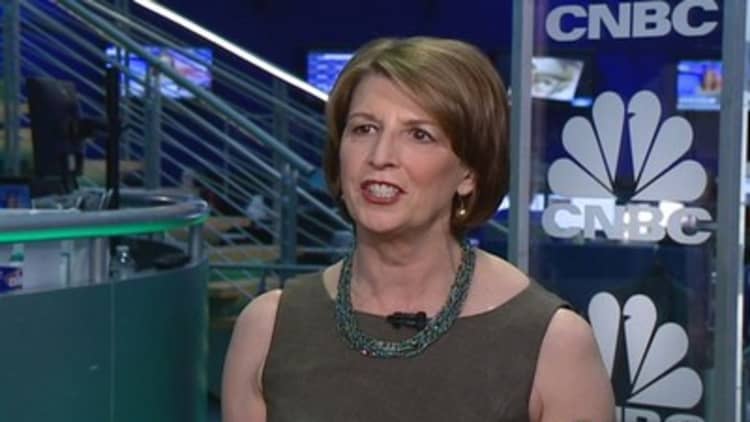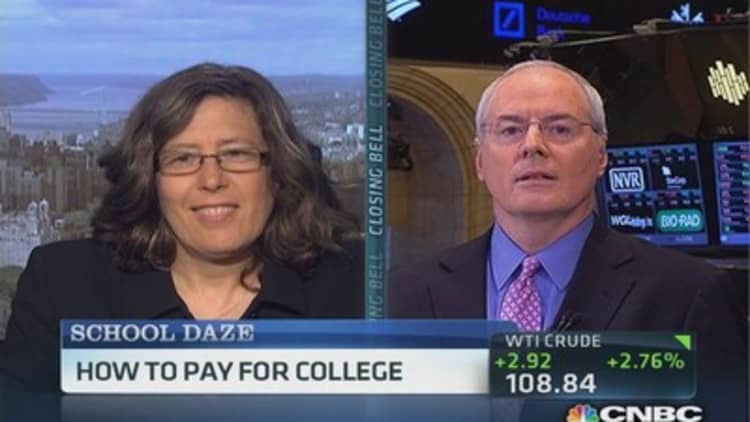
With apologies to Charles Dickens, the spring of senior year in high school, full of college acceptances and rejections, can be the best of times and the worst of times.
If you or your child is in the former camp, congratulations—especially if a college's "yes" has come with a financial aid offer.
Some lucky students will even have a handful of acceptances and financial aid offers to choose among and may be thinking of playing one college off the other, particularly with offers of merit aid. But if you are considering a round of haggling, think again.
Experts say parents who play that game can help fuel an arms race: The more aid a college shells out, the more it has to make up the difference somewhere else—quite possibly in the tuition levels your younger children face.
"If you think of a college as beginning from a need for a certain amount of revenue, then any discounting it does, whether need based or merit based, if it wants to hit a particular revenue target, then it has to push up list price tuition," said David Feldman, a professor of economics at the College of William and Mary and co-author of "Why Does College Cost So Much?"
Feldman and co-author Robert Archibald analyzed the effect of financial aid offers, or tuition discounts, on tuition between the 1994–1995 and 2003–2004 school years. The average grant to students at public four-year institutions more than doubled over that time, and the two economists calculated that the extra discounting pushed up tuition an extra 4.5 percent. Put another way, the extra discounting accounted for 6.7 percent of the 72 percent tuition increase.
The change was significantly more dramatic at private four-year institutions. Average aid grants to students more than doubled at these schools as well, and the economists found that increased discounting pushed up list-price tuition by 14.5 percent. That represented 30.7 percent of the 62 percent tuition increase over the period.
(Read more: Which students have the highest debt?)
Financial aid awards have been on the rise since the financial crisis, according to data from Noel-Levitz, a higher education consulting firm.
Its CEO, Kevin Crockett, says a combination of high prices and large aid awards can help institutions target the students they want. But sometimes, the stated tuition price gets so high that virtually no one actually pays it—and that's less than optimal, he says.
Crockett points to a school he worked with recently, whose leaders were concerned that tuition was too high. "They looked at it, and if they had lowered their sticker price by 8 percent, only 4 percent of their families would be paying a net price higher than that today," he said. In a case like that, the high price may be causing some applicants to bypass the school, while not actually netting the college more revenue.
Overall, colleges appear to be increasing their merit aid awards faster than their need based aid. In the 1995-1996 school year, financial aid awards based on need were far more common than merit grants at private and public colleges and universities. But merit aid became more common than need–based aid at public institutions by 2007–2008, and almost as common as need-based aid at private institutions.
Many of the most selective schools do not offer merit aid and have endowments that support significant need based aid.
(Read more: Top colleges to low income students: we want you)
But among less selective institutions, or those that are less well heeled, grants of merit aid are a tool to lure students who might not otherwise attend, whether because of financial need, a stronger academic record than the institution's average, or something else.
"Providing financial aid in general is sort of a bad cycle that they've gotten in, where they raise their prices and then they have to raise their aid," said Stephen Burd, a senior policy analyst in the education policy program at the New America Foundation.
(Read more: Class system? When it comes to school aid, rich have the edge)
Still other colleges use aid to compete with rival schools that are trying to attract the same students. And part of the pressure to do so is coming from parents.

Georgia Nugent, a senior fellow at the Council of Independent Colleges and former president of Kenyon College, recalls a mother who contacted the college after her child received several offers of merit aid, though not from Kenyon.
"They had an array of offers, from $0 to $4,000 to $10,000 to four years of free ride," she said. "The mother said to my financial aid officer, 'We don't expect to pay any more than $9,000.'" Nugent said the family had sufficient assets and income to cover the cost of college but still felt they could exert the pressure.
A few small colleges are taking steps to reverse the trend. For example, Converse College in Spartanburg, S.C., is cutting tuition by 43 percent, to $16,500, for the class entering this September and is cutting back on merit aid.
"We realized that by 2016, our total comprehensive sticker price would be over $50,000, just $4,000 less than the current average family household income in America," said Betsy Fleming, Converse's president. And even though the college was giving out plenty of financial aid, with less than 10 percent of students paying full freight, "we were noticing that a lot of middle class families weren't comfortable looking at Converse," she said.
With tuition now much closer to the net price students were actually paying, and merit aid grants curtailed, Feldman says applications are up more than 5 percent and the quality of applicants is higher.
But Nugent says any widespread effort to curtail merit aid and rein in tuition hikes is unlikely. That would require cooperation among institutions, and the Justice Department has taken a dim view of colleges talking about financial aid policies. Nugent herself was one of several college presidents the department investigated when they tried to hold general discussions about aid policies.
"The Department of Justice has had a very chilling effect," she said. "Most of us have been really pretty frightened away from the topic."
That will leave individual colleges like Converse to make decisions to step away from the merit aid bandwagon if tuition increases are to be kept in check. And parents who want tuition to stop heading skyward may have to step back as well.
—By CNBC's Kelley Holland. Follow her on Twitter @KKelleyHolland.


